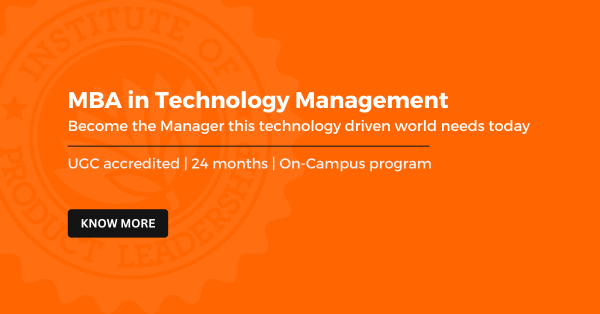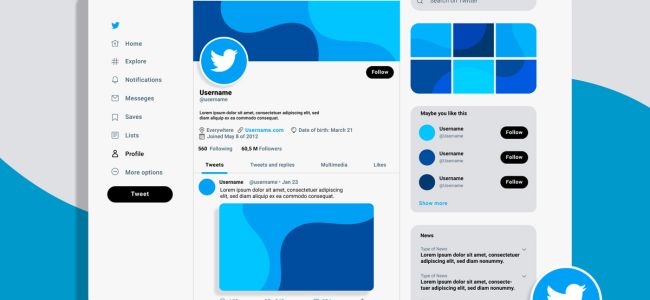Struggling to Land Your First Tech Job? Here's Why and What to Do
- Career
- 4 min read
Every year, thousands of aspiring developers, designers, analysts, and tech enthusiasts step into the job market with ambition and skills, but many find themselves stuck. Despite putting in hours into online courses, certifications, and portfolio projects, their inbox remains empty. No interviews. No callbacks. Just frustration.
It is estimated that more than 1.2 million students received degrees in technology-related programs in 2024 alone. However, the opportunities at the entry level, i.e., those that can be accessed by freshers, are narrow. Add to the fact that advanced technologies have emerged, including automation and AI systems, lowering the demand for simple positions, and a clear picture emerges: the first tech job does not require being present and having a degree anymore.
And that does not imply that it cannot be done. It implies that the strategy has to change. Let’s break down the real reasons candidates struggle and what they can do to turn things around.
- Entry-level roles still expect you to bring real experience, even if it’s from projects or freelance gigs.
- Learning tools is step one. Using them to solve actual problems is what gets noticed.
- Your resume and portfolio should clearly explain what you’ve done and how it helped.
- Networking works best when it’s human, thoughtful messages and shared conversations go a long way.
- If you’re looking to grow into tech leadership, structured programs like IPL’s MBA in Technology Management can give you the edge.
Many entry-level jobs still want you to be job-ready
You have experienced those job posts that require 0 to 2 years of experience and expect you to be well-versed in five specific frameworks and have full-stack apps and deployment under your belt. That is misleading, and more so to newcomers.
The reality is, companies often hope to hire someone who can get started quickly without needing much hand-holding. This is not the best situation, but that is how the job market is now.
What you can do
- Find short-term gigs or internships to make an impact in places where you can gain exposure and show impact fast.
- Discuss two or more important projects. They should be complete, functional, and well explained, even if they are small.
- Real-world context matters. For example, a tool that helps a local café with orders is better than another to-do list app.
Knowing tools is one thing, applying them is another
That is awesome that you have learnt Python, React, SQL, or any other technology. Listing them, however, is not all that helpful. Recruiters will want to understand what you have achieved with those tools and whether or not you know how to apply them practically.
Many resumes read like toolkits, but what people are really looking for is how you solve problems with those tools.
What you can do
- Create projects out of real use cases – something that can solve a small day-to-day problem or be of use to a member of your local community.
- Add a couple of lines on why you chose this stack: Why this stack? What were your obstacles? What did you do to get over them?
- If your work led to any outcome, even something like improving someone’s workflow, mention it. That makes it memorable.
Your resume might be blending into the pile
The trend with most of the resumes is that nobody gives much attention to them since they are generally the same. The same structure, the same keywords, the same first line about being passionate about tech.
In reality, recruiters are skimming quickly. They are on the lookout to identify success and difference-making, not just responsibilities or tools.
What you can do
- Instead of saying “Built a weather app,” try “Created a weather alert tool using Python that sent SMS notifications during heavy rains.”
- Tailor each resume for the job. It takes more time, but it drastically improves the chances of making it past the first round.
- Keep things simple. Use clear formatting, highlight outcomes, and get a friend or senior to review it.
Networking isn’t about random messages
You’ve probably been told to “network more.” That means you jump to LinkedIn and start writing messages to people. However, blasting a collection of DMs saying, Hi, can you refer me?, does not work most of the time.
Building meaningful connections takes a little more effort and a different mindset.
What you can do
- Follow those who do the jobs you want to do. You can begin by commenting on their posts sincerely.
- Join communities, Slack groups, Discord servers, and local meetups. They are not that loud and carry more personal content.
When you reach out, be specific. For example: “Saw your post on X, I’m building something similar. I would love to hear your thoughts.”
Your portfolio should show how you think, not just what you built
A nice-looking portfolio is good, but even better is how you tackled problems therein. Screenshots are not your story; your thought process is.
A manager who hires you would like to see how you solve problems, make decisions, and analyse your accomplishments.
What you can do
- For every project, add a short write-up: What problem were you solving? Why this solution? What trade-offs did you make?
- Add demos, videos, or even voiceovers telling them how you are doing your work, like you are showing someone how to do it.
Point out changes that you made over time. It shows growth and maturity, which goes a long way.
People skills matter more than you might think
When you are new to tech, the first thing that comes to mind is that it involves hard skills. In a team, though, your communication, dealing with pressure, and shaping up can be the key.
Most of the companies are more than happy to invest in training the technical skills as long as they see the correct mindset and attitude.
What you can do
- Rehearse typical interview anecdotes: an occasion when you had to learn something in a short time, supported a teammate, or had to fix something in a stressful situation.
- Even examples of how you have worked in other fields or other jobs are fine to pull into it, because they still illustrate how you work.
- Don’t shy away from showing curiosity. It is always good to be humble and eager to learn and take feedback.
Waiting to be “ready” often delays progress
It’s easy to get stuck thinking, “I’ll apply once I finish this course,” or “I need one more certification.” But the right timing is unlikely to appear.
The difference between progress lies in whether you do it or not, not when you think you are prepared enough.
What you can do
- If you’ve built a couple of decent projects and have a working resume, start applying. You’ll learn along the way.
- Think of doing short-term gigs, volunteering, or even helping friends or small business activities, as all of it counts.
- Become persistent by showing up. Each step connects with the other, and that cadence will end up bringing outcomes.
Recruiters look for visible signals
You may be a great prospect, but the people in hiring departments do not have time to read between the lines. They are looking at live communications, GitHub accounts, LinkedIn activity, and open work.
The more people see you and the more consistent you are, the better.
What you can do
- Make your GitHub clean with pinned repos, a readable README, and activity.
- Now and then, post an update to LinkedIn about what you are learning, what you are building, or any micro victories.
- You could write brief blog posts (or tutorials) describing things that you have worked out. It has depth in it, and it benefits others as well.
Thinking beyond just your first job
Unless you happen to be a person who has already gained some experience and is now interested in becoming a tech leader, working with products, or strategy, you should think in the long term. Hands-on learning is the best, but plenty of others may require systematic exposure, mentoring, and fluency in business, along with technology.
That’s where programs like the MBA in Technology Management by the Institute of Product Leadership can make a real difference.
It’s a two-year, full-time program designed to prepare you for roles where tech meets leadership, product management, digital transformation, technology consulting, and more. You don’t need to come from an elite background. What matters is your ambition to lead and your willingness to grow.
The program includes hands-on coaching, paid internships, strong industry connections, and job placement support. It’s for people who want to move from writing code to owning the product, leading teams, and shaping the bigger picture.
If you’ve been trying to break into tech, or you’re thinking about the next step after your first job, this path might be worth exploring.
Frequently Asked Questions (FAQs)
If you’ve built 1–2 solid projects and have a clean, tailored resume, you’re ready to start.
Not always. Projects, real-world experience, and the right approach often count more than your degree title.
Yes, especially if you want to move into roles that involve strategy, leadership, or managing products and teams.
Absolutely, especially if they’re well-documented and show how you think.
Waiting too long. Perfect timing rarely exists; action and consistency matter more.






